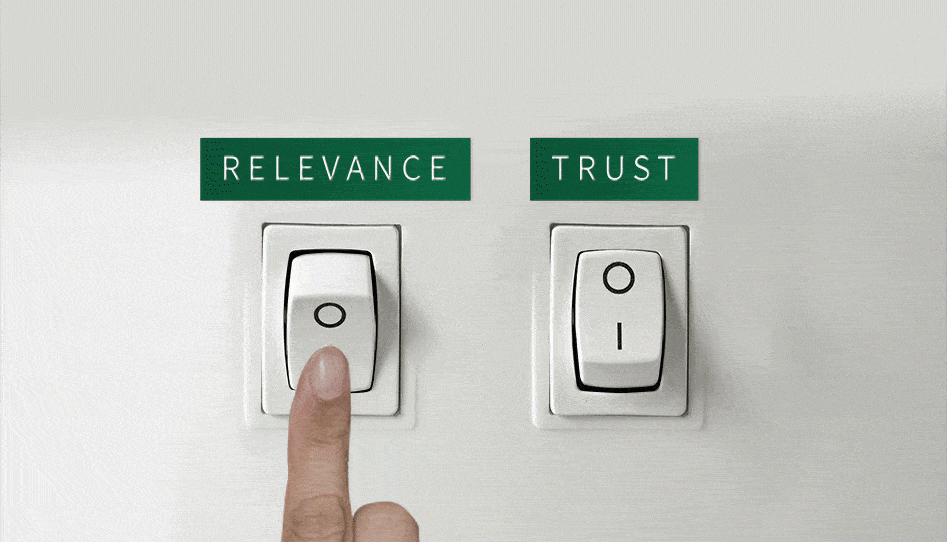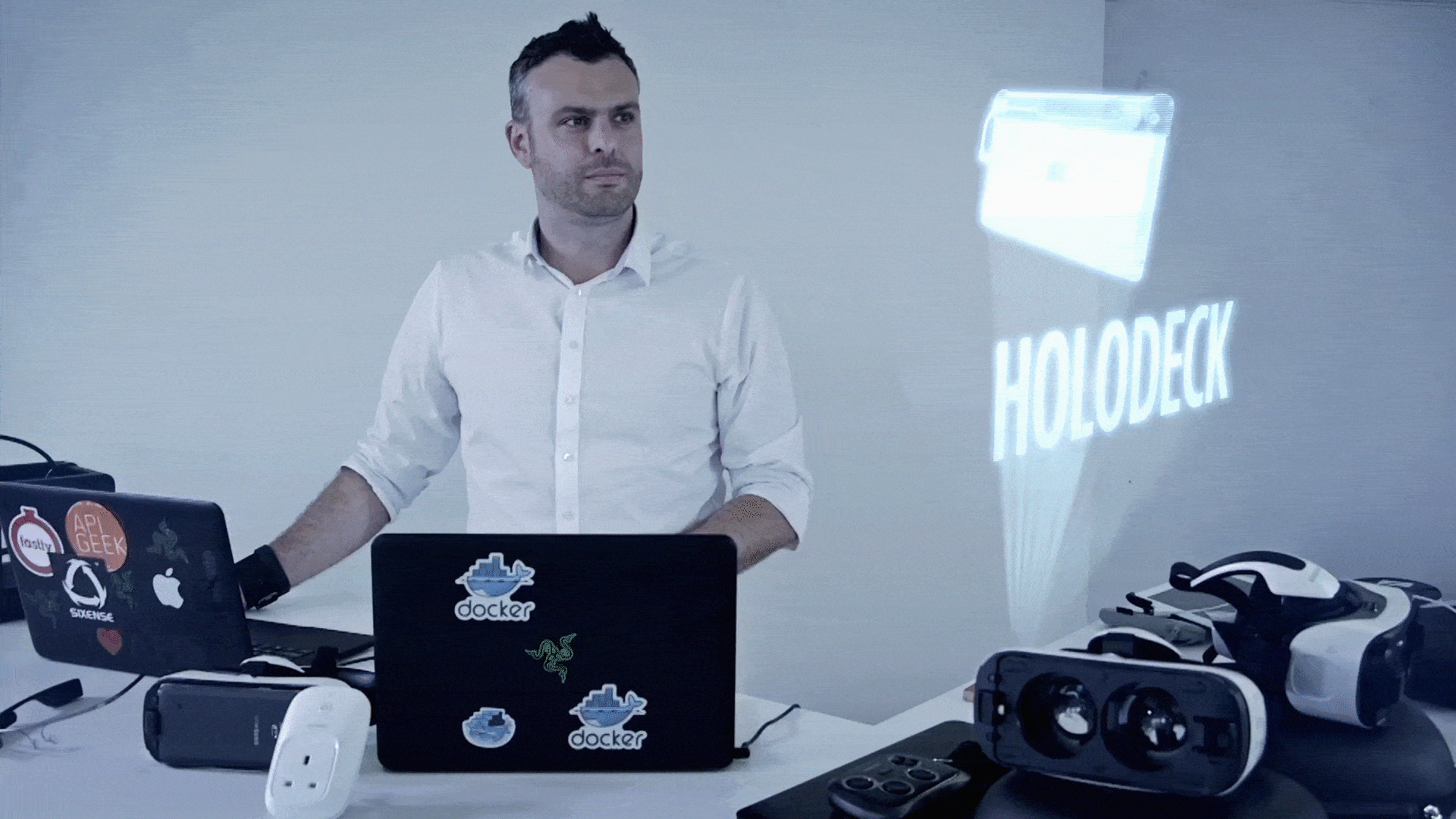

Why relevance and trust are now super-important
There is plenty of research to show that if you can make yourself more relevant to people you want to do business with, they will be more inclined to do business with you. Our experience mirrors this: where clients increase their relevance over time, business flows.
Likewise, customers need to come to trust you. This is absolutely key, as without a foundation of trust, you can’t build commercial relationships.
Neither relevance nor trust can be “switched on” overnight.
These are things you must earn. While most companies spend significant budget on marketing, corporate communications, business development and sales, very few focus on what will ultimately make the difference. And generating the “brand love” can be tough for corporate businesses who don’t have mass consumer budgets.
It’s been understood since the Mad Men heyday of brand advertising that if customers like and trust your brand, you will get more business. For decades, brands invested heavily in creative campaigns to delight, entertain, inspire – in order that they might become desirable, aspirational and popular. Digital appeared as an exciting shortcut to the process, helping you reach individual consumers more directly and personally.
Yet with revelations about questionable digital metrics – digital & social media can be a sugar high. Just because you get lots of awareness doesn’t mean your customers like your brand.
Neither relevance nor trust can be “switched on” overnight.

“The number of impressions is not the number of people impressed.”
Source: Brand Affinity Marketing, Wistia
How to build Brand Affinity when attention is hard to get
In the last few years more and more marketing departments have adopted Content Marketing as a core strategy. Indeed, businesses need to act like more and more like media companies – engaging and developing audiences who feel positive towards the brand. But true audience building is not something many marketing departments are adept at doing.
One of our key technology platform partners is Wistia, and they have recently created a play book on Brand Affinity Marketing – which is all about relevance and trust. Here’s what they say:
The vast majority of advertising campaigns, however, have little genuine impact on the trust and affection people have for a business. To mask this problem, distribution platforms measure success with metrics like impressions, clicks, and views, giving trivial passing interactions the same weight as meaningful engagements. The number of impressions is not the number of people impressed. Source: Brand Affinity Marketing, Wistia.
We agree.
The important metrics are all about increasing the time customers are spending engaged with your brand, via stimulating and relevant content, as well as growing your organic, 100% owned audience (e.g email).
“…businesses should create binge-worthy, long-form content that adds value to viewers’ lives…” Wistia



Wistia is focussed on video, but their recommendations hold true for almost any form of communication. Here’s what they say you have to do to build relevance and trust – or as they call it – brand affinity.
In order to build brand affinity – and therefore create a well-loved, notable brand – businesses should create binge-worthy, long-form content that adds value to viewers’ lives and doesn’t just push them towards the next stage in the funnel.
You can execute a Brand Affinity Marketing strategy with content like podcasts, books, a series of blog posts, and more. This way of thinking used to be reserved for big brands with huge budgets, but now more than ever it’s critical that businesses start aiming for the goal of increasing brand affinity. For small to medium-sized businesses, investing in Brand Affinity Marketing is the key step in being able to cut through the noise, resonate deeply with your most loyal fans, and spread word of mouth, allowing you to effectively scale and grow an audience (and your business) over time.
Content types that perform
For the last 15 years, we’ve been working with companies to help them strengthen relationships with the people who matter the most to them. We’ve been getting incredible results for our clients, which translates into measurable business outcomes. We’re often told that the outcomes “exceed expectations”, which is gratifying.
We’ve been doing this with clients from a wide range of industries – mostly quite sizeable companies, and many of them well known names. Like AXA, HSBC, Hilton, PA Consulting and Deloitte. We’ve been working closely with academics from London School of Economics, Oxford University and UCL. We’ve also worked with dozens of very well known people including Lord Seb Coe, Lawrence Dallaglio, British politician and TV personality Ed Balls and a range of elite sportspeople across various codes. (You can check out our case studies here).
The content we produce for companies is modelled on the very best consumer content. Because after all it is the hot big budget producers who set the standards for what we all watch in our private lives.
One leading financial services provider even adopted the video documentary series we produced for them as their video standard for all future productions.
Adapting what works from other industries
We have a particular technique which makes a big difference. We do this on almost all projects we undertake for clients, and we know it has significant impact.
We’ve found that it is super-important to look outside your own industry, to see how other businesses outside of your competitive set have found success. Almost regardless of the problem you are seeking to solve or the opportunity you seek to exploit, someone in another industry has already “cracked the code” for you. They might have spent millions of dollars to do so. This means you can swiftly adopt platforms, techniques and strategies used by a market leading companies, with more emerging every day.
Don’t reinvent the wheel. By looking outside your own industry, ignoring what your competitive set are (all!) doing, you can leapfrog them before they’ve even realised it. We’ve seen instances where it has taken competitors a year, or even more, to catch up.
It also means that you don’t have to spend huge amounts on research and development, or pay for the cost of a “trial and error” approach. We know for sure that adopting this approach has saved our clients thousands, sometimes tens of thousands, of Pounds/Dollars/Euros.
So if any of this sounds like it could be appealing for your business, we can provide a more detailed presentation on Brand Affinity, and how it might work.

By looking outside your own industry, ignoring what your competitive set are (all!) doing, you can leapfrog them before they’ve even realised it.






